All over the world, COVID–19 has created wild shifts in workloads, both up and down. Customer service teams are on the frontline of work changes, and at Help Scout we’ve been able to see those shifts happening in our own data.
In this article, we’ll take a look at some of the most affected industries, hear from some of the individuals handling the work, and share our best advice.
Customer service volume shifts due to COVID–19
Many customer service teams are used to seasonal changes in their incoming support volume: The Black Friday rush for retail stores, the Christmas-New Year lull for many B2B services, or the sporadic peaks of event-focused businesses. Teams know to expect these changes and can prepare for them, for example, by scaling their team size or adjusting support hours.
COVID–19 has created changes much greater in scale and with much less warning. The graphs below represent the weekly number of customer responses being sent by Help Scout customers (though we’ve anonymized the information).
Across all Help Scout customers who have at least 100 customer conversations a week, 12% are now handling more than double their February weekly volume.
XL
Industries seeing big drops in support volume
This pandemic has been catastrophic for many industries, creating an immediate substantial drop in business. That has led to temporary or permanent job losses across the business, including customer service departments, but many folks remain in service roles with greatly reduced incoming queries.
Tourism transport
Unsurprisingly, transportation companies of all kinds have seen major drops in demand or have been forced to stop providing service completely.
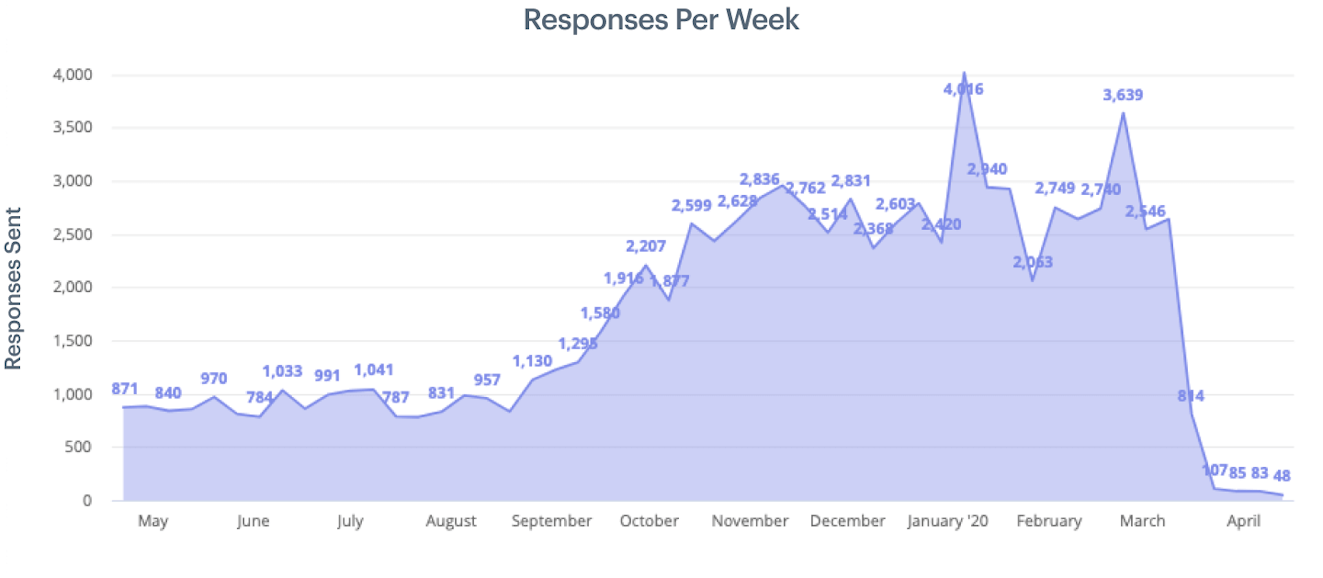
Home services
Businesses requiring service providers to enter the customer’s home have seen significant drops in demand. In this case, growth at the beginning of the year has completely dropped away.
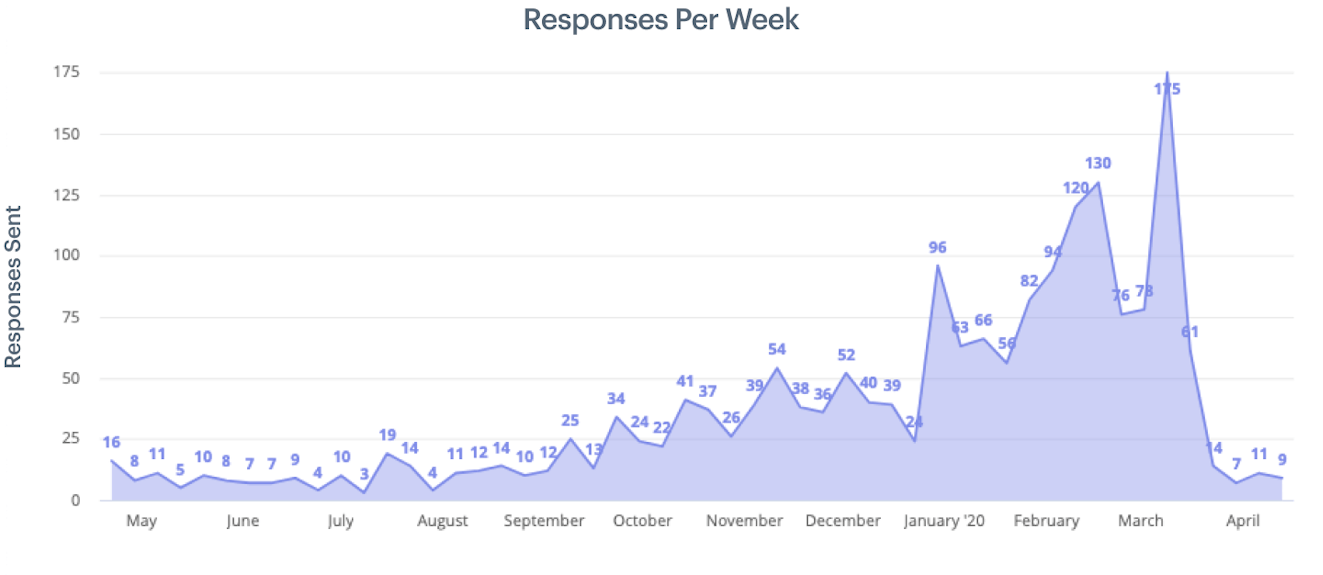
Entertainment services
Many businesses in our dataset show this spike in activity as COVID-19 news began to circulate and people began cancelling plans. Then, the volume falls dramatically with longer-term closures.
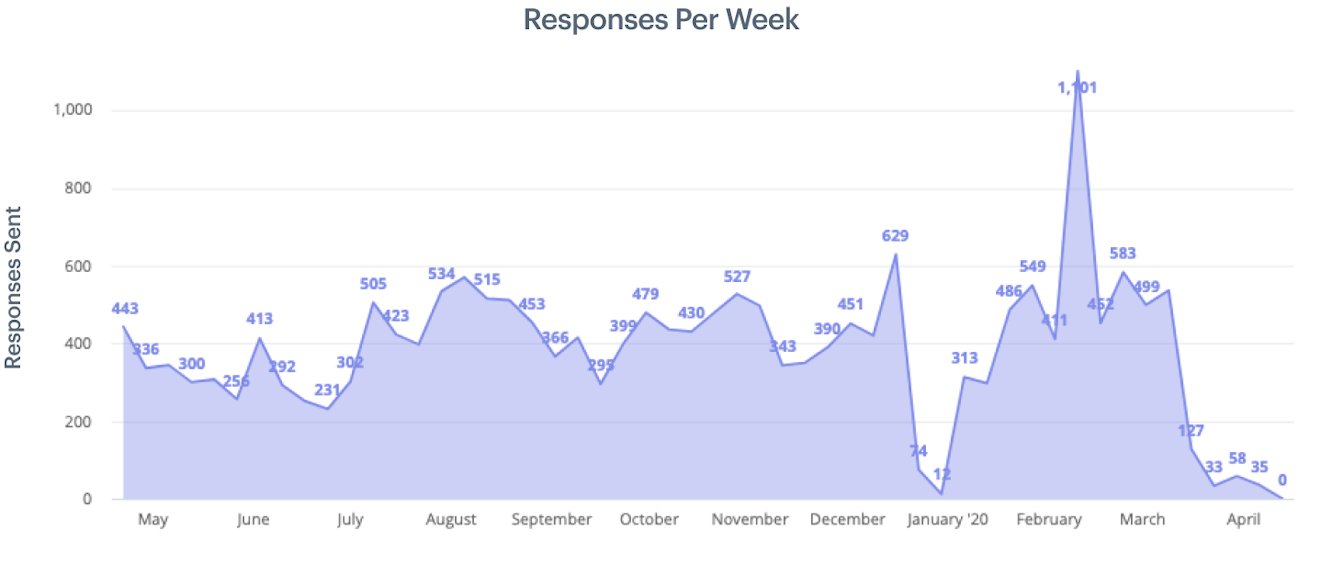
Working during an unexpected lull in support volume
While business prospects remain uncertain for affected companies, there are still customers to be served, and quieter periods may be an opportunity to work on some improvements that are difficult to make in times of normal support volume.
If your team is working through low-volume days, consider the following:
Focus on listening — Customers will be more stressed and may be under pressure; outside of their interaction with your business, life is difficult for many people right now. If you have more time, you can spend some of it being a good listener and allowing people to have at least one calm, helpful conversation in their day.
Take some time to work on your knowledge base — You can add new content to your help documentation, improve existing content, or perhaps create videos. When your normal volumes return later on, high-quality self-service options will be a huge win.
Clean up your saved replies — Prepared responses you wrote years back may need some updates in content or for voice and tone, based on where you are today.
Review your processes and workflows — When you are just keeping up, you don’t have time to consider whether there is a more effective way to do something, or if what you are doing even makes the most sense anymore. Use quiet periods to rethink your approach and implement new procedures.
Try some experiments — This might be the time to try adding live chat to your offering, when the volume will be more manageable, or recording short videos for your knowledge base.
Build internal relationships — Do you have product teams you want to understand better? Consider joining some of their meetings or taking time to read through their documentation.
Rethink your reporting — If you’re a team leader or manager, now is a good time to take a look at how you report on your team’s workload and impact. Should you be using tags or custom fields differently so you can capture more useful information? Talk to your executives and other department heads and ask if there is information they’d like to see.
Industries seeing big increases in support volume
Although our data shows about twice as many companies with lower support workloads compared to the number seeing increased loads, there are still plenty of companies suddenly handling substantial jumps in customer conversations.
Home improvement retail
Online retailers of household goods, home hardware, and gardening supplies have seen large jumps in demand, especially as the stay-at-home period stretched on.
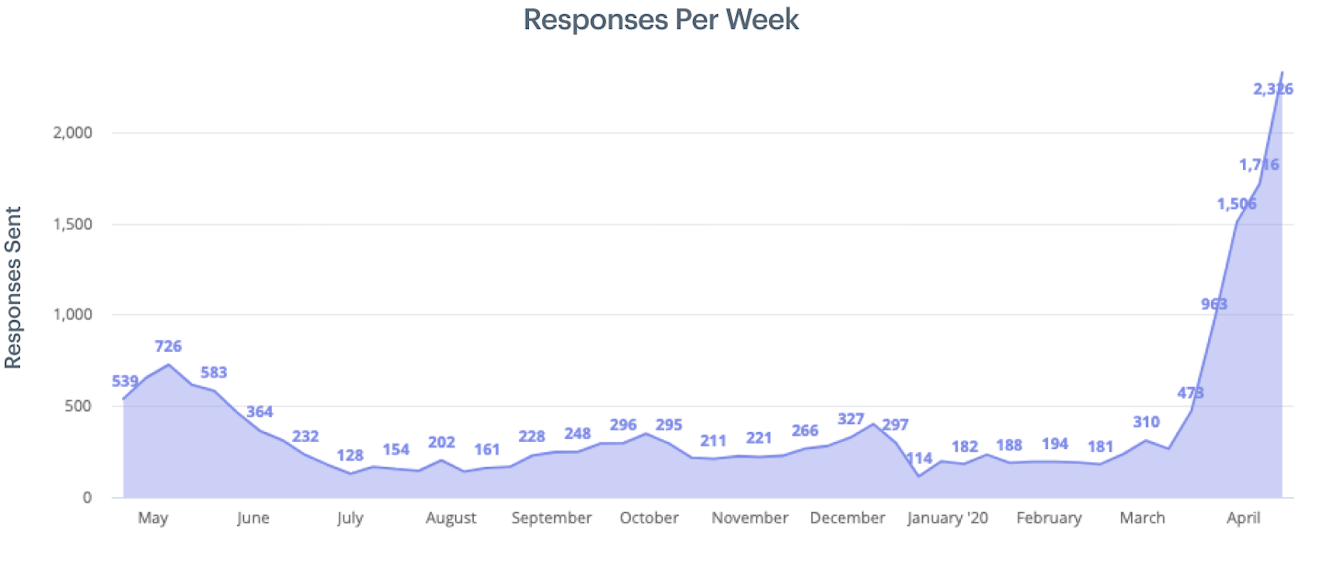
Remote work and education
Video providers, collaboration apps, and e-learning technology companies have all seen unprecedented jumps in demand for support through March and April.
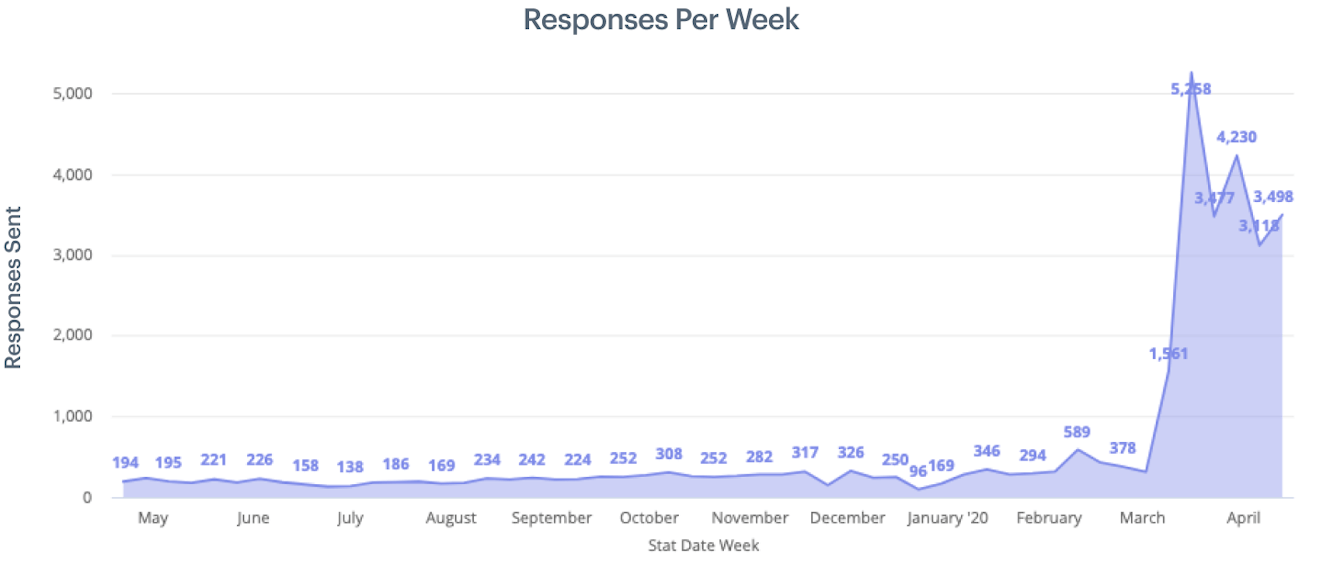
Matt Barry, Support Manager at LearnUpon, has seen this firsthand: “We saw our April ticket count go up by 40% over the same month the last two years … April traditionally is our slowest month, and this turned out to be the busiest month we’ve ever had.”
Lizzie Keiper at GoNoodle, provider of movement and mindfulness videos for children, has seen a similar jump: “Our home usage has skyrocketed along with our home support volume now that teachers are sending us home! March and April have been the busiest months we’ve had in ages.”
Home cooking
If you’ve been scouring the internet for yeast or hunting for bread tins, you won’t be surprised to see this huge spike in support demand for companies providing baking and cooking supplies.
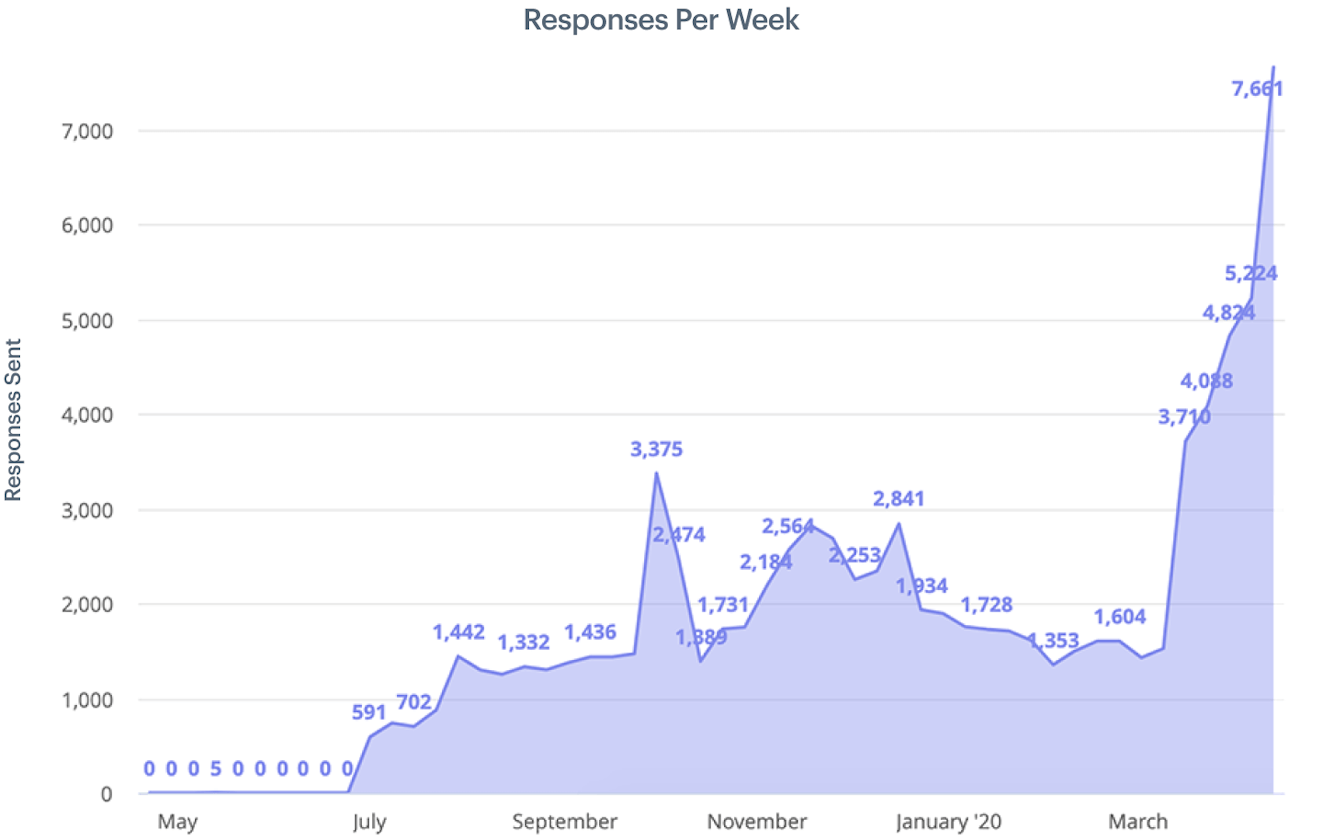
At-home health and fitness
With gyms and parks closed, masses of people are creating new exercise routines at home. Fitness equipment and online fitness class providers are being kept extremely busy.
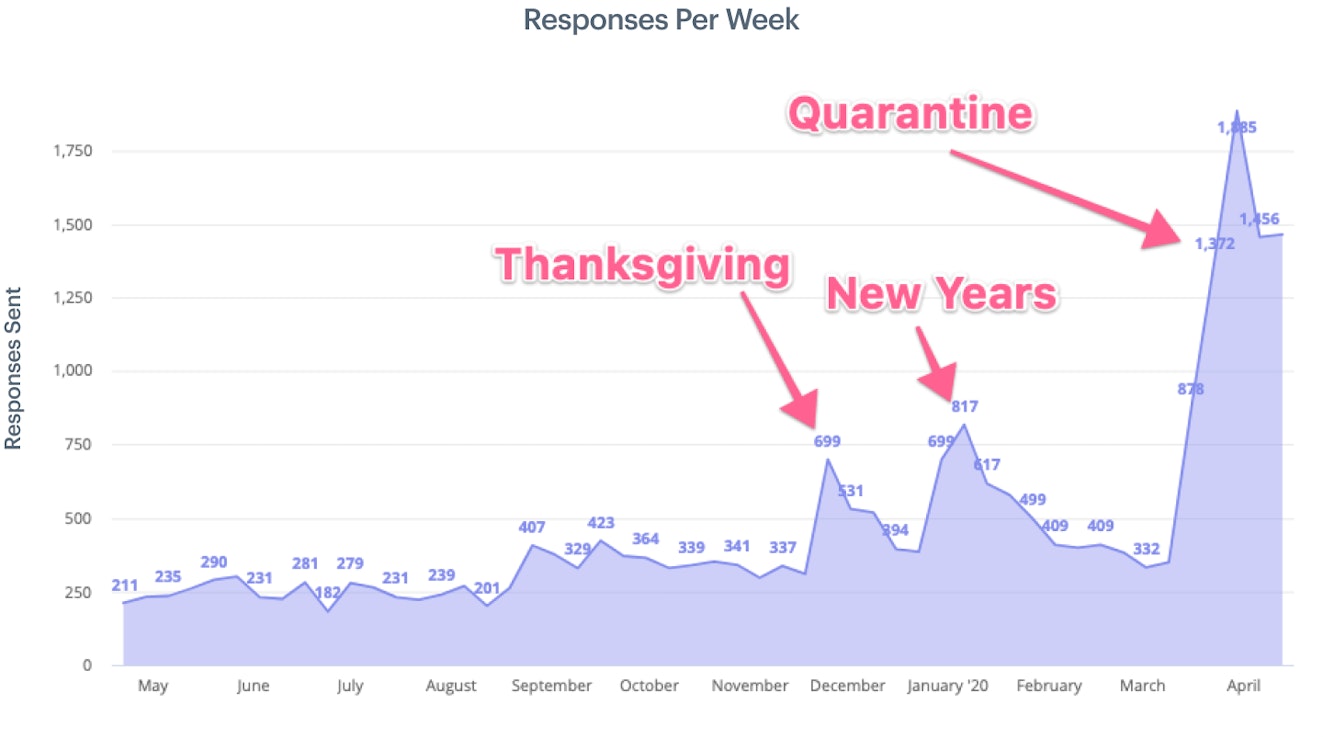
Resources for coping with a rush of customer queries
First, let’s acknowledge that the middle of a global crisis is a really tough time to get out of your customer service queue and take higher-level actions. Team leaders may feel guilty about leaving their team to do the work in a busy queue.
The best thing a leader can do is be a multiplier for the rest of the support team, taking action that will make all of their lives easier rather than being just one additional resource in the support inbox.
Coordinate your crisis communications with the rest of the company — Be sure they are accurate and easily accessible so every customer is getting reliable information.
Revisit any SLAs or internal metrics that may not be practical during a crisis — Create some breathing space by letting your team know that slower response times are OK for now.
Funnel as many people as you can to helpful self-service options — Tools like Beacon can be switched into a “self-service first” mode that can help you manage volume. Review your Contact Us page and ensure self-help options are accessible there, too.
Use workflows and saved replies to reduce duplicate work and improve consistency — Organize conversations as they come in, assign them to the right people, and add relevant tags so your team doesn’t have to do it manually.
Review your triage process in light of current company priorities — What can be left longer than normal because it’s just not important right now? Which customers are the most important right now?
Consider your support channels — Can you still give good service on them all? Is real-time support less important for your customers now, or more important? Can you temporarily close channels to help your team handle the rush more easily?
Bring in some external help — Thoughtful outsourcing can help your team get on top of the queue and provide some work for other folk who might really need it.
In addition to the suddenly busy or fallow support teams, there are folks who will be seeing other unusual patterns. Hotel booking companies, for example, have been through immensely busy periods of cancellations and rescheduling, followed by very quiet periods.
Some service providers will have seen the retail element of their customer base dwindle away, but simultaneously be handling huge growth from their healthcare sector customers. Those are no less challenging conditions to be navigating.
Rob Kuczynski at Ubersmith reflected, “Our ticket volume plummeted the first couple weeks of lockdown, then shot back up. Last week we got the most tickets of any week in 2020. It’s like once people adjusted to quarantine, they let loose all their pent up support requests.”
It’s not just volume
We cannot reduce the impact of COVID–19 on customer service to some shocking graphs. Behind those numbers are real people, both the customers and those who serve them. Support tools and systems and even staffing can be scaled up and down, but it is much harder to scale up the emotional energy needed to work effectively during a global crisis.
Andra Roston, Customer Support Manager at Venngage, makes the point clearly: “The emotional effort of helping highly stressed and anxious customers while dealing with their own changed situations has really been taking a toll on my team.”
As Director of Customer Care at Accountable2You, Paul Tucker is seeing that anxiety manifest in trickier conversations: “Customers are providing less data or information within their conversations (meaning it takes more touches per conversation to gather the necessary information to help them).”
People are working from home without the practice or setup to do it well, or with their kids suddenly nearby all day. We should all be trying to build trust, to listen well, and to be more flexible than we might usually be, because there is still a long road ahead.
Tips from 100+ remote workers to help you stay productive when working from home.
If you still have customer service work to do, we hope this article has given you some help in handling the changes effectively.
Finally, if you’re a customer service pro who is looking for work right now, here are a few places to start:
Kaytlin Louton and Assembled are connecting talented support people to jobs during COVID-19







